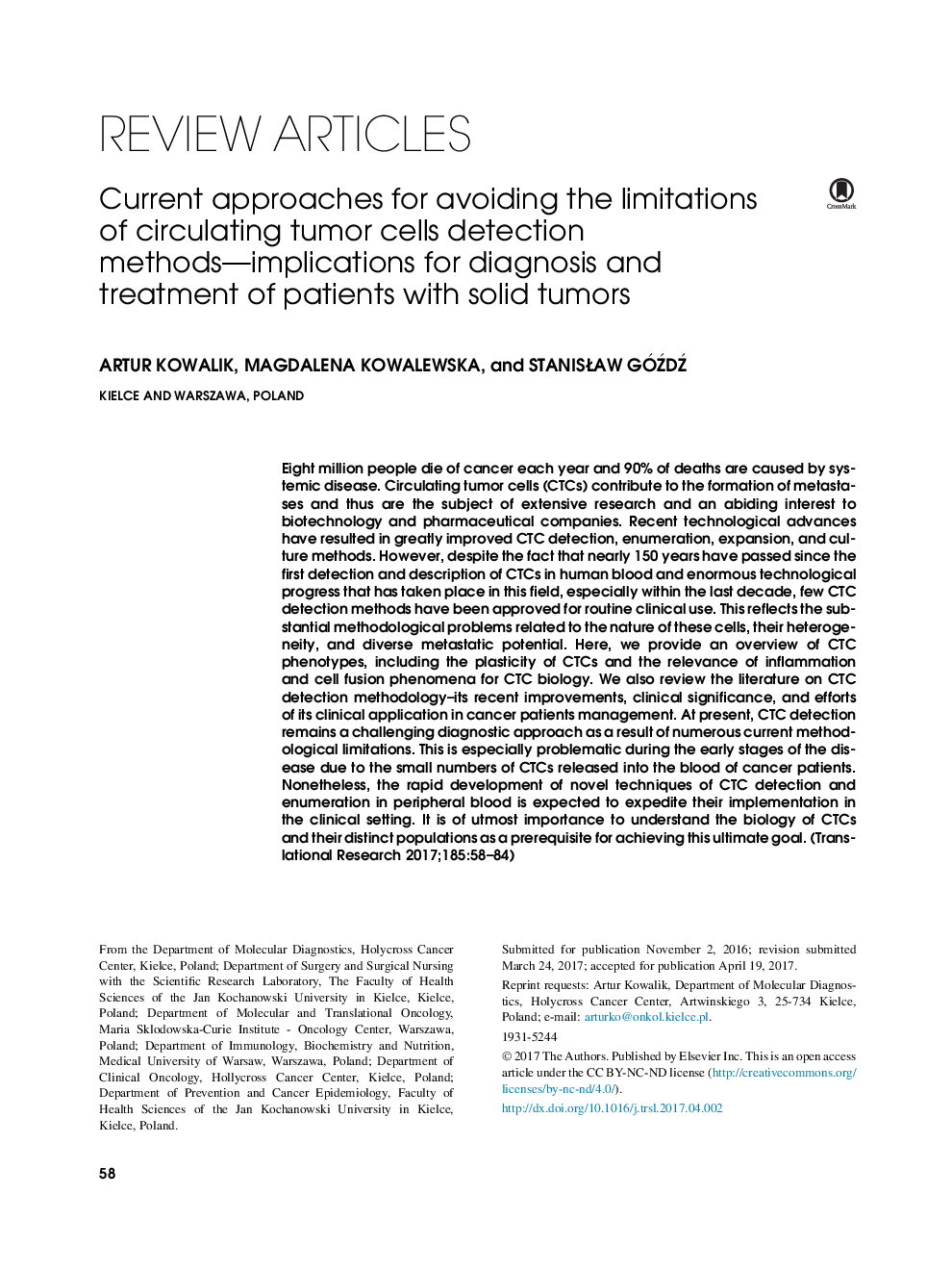| کد مقاله | کد نشریه | سال انتشار | مقاله انگلیسی | نسخه تمام متن |
|---|---|---|---|---|
| 5685037 | 1597925 | 2017 | 42 صفحه PDF | دانلود رایگان |
Eight million people die of cancer each year and 90% of deaths are caused by systemic disease. Circulating tumor cells (CTCs) contribute to the formation of metastases and thus are the subject of extensive research and an abiding interest to biotechnology and pharmaceutical companies. Recent technological advances have resulted in greatly improved CTC detection, enumeration, expansion, and culture methods. However, despite the fact that nearly 150Â years have passed since the first detection and description of CTCs in human blood and enormous technological progress that has taken place in this field, especially within the last decade, few CTC detection methods have been approved for routine clinical use. This reflects the substantial methodological problems related to the nature of these cells, their heterogeneity, and diverse metastatic potential. Here, we provide an overview of CTC phenotypes, including the plasticity of CTCs and the relevance of inflammation and cell fusion phenomena for CTC biology. We also review the literature on CTC detection methodology-its recent improvements, clinical significance, and efforts of its clinical application in cancer patients management. At present, CTC detection remains a challenging diagnostic approach as a result of numerous current methodological limitations. This is especially problematic during the early stages of the disease due to the small numbers of CTCs released into the blood of cancer patients. Nonetheless, the rapid development of novel techniques of CTC detection and enumeration in peripheral blood is expected to expedite their implementation in the clinical setting. It is of utmost importance to understand the biology of CTCs and their distinct populations as a prerequisite for achieving this ultimate goal.
Journal: Translational Research - Volume 185, July 2017, Pages 58-84.e15
